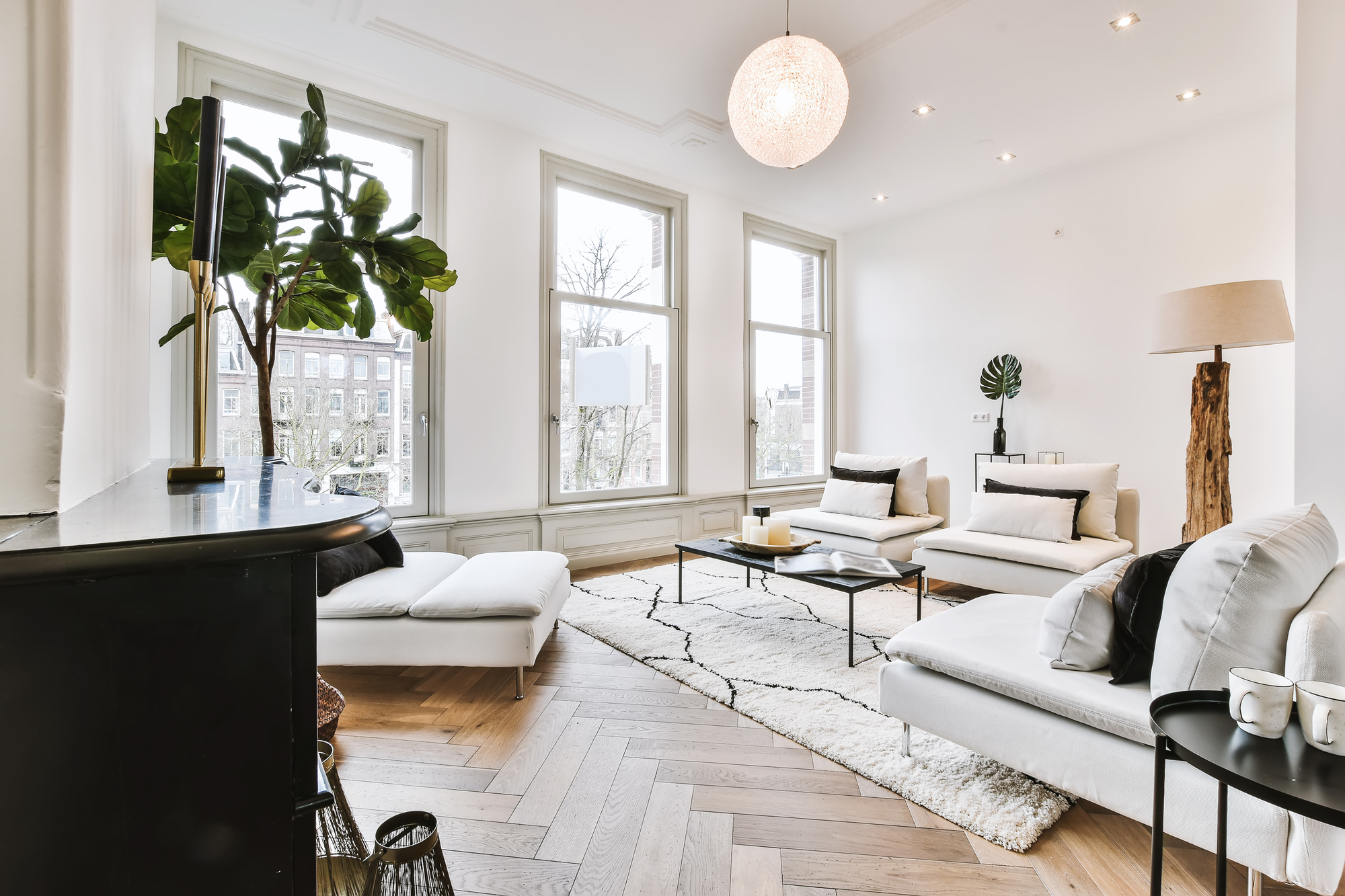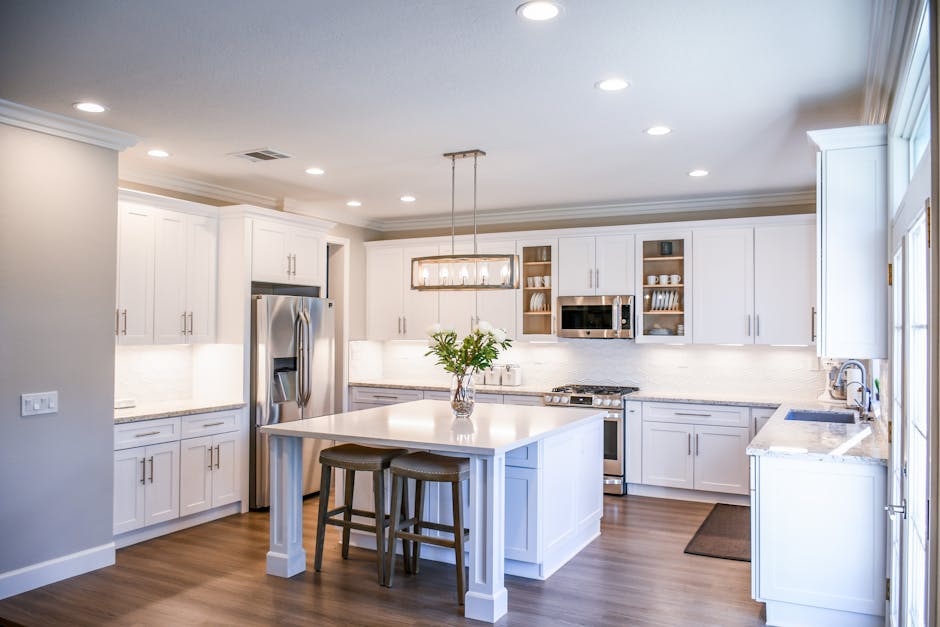Inside: Learn how to declutter your home effectively and transform it into a serene haven. Follow our well-thought-out plan and stay organized.
Decluttering your home can seem like a big task, but it becomes manageable and rewarding with a well-thought-out plan and the right approach. By the time, you can transform your living space into a serene haven by breaking down the process into smaller steps and staying organized.

Table of contents
Create Your Decluttering Blueprint
Firstly, start by listing all the areas you want to declutter. Then, break it down room by room, ensuring you account for every nook and cranny. Therefore, this makes the process manageable and keeps you from getting overwhelmed.

Decide on donation spots and selling points for unwanted items. Consider local shelters, community centers, or online marketplaces. Having a destination for your items will motivate you to part with them.
Setting a realistic schedule, allocating time for each room and including breaks will help you stay focused and prevent burnout.
Essential Supplies:
- Trash bags
- Boxes for donations
- Cleaning supplies
- Label maker
Create a declutter caddy filled with essentials. This portable toolkit keeps the basics at arm’s length.
Set a timer for each category to keep you moving and prevent spending too long in any one spot.
Remember to consider these points while decluttering: Ask yourself tough questions. Do you use this item? Does it hold meaning? Answer honestly to save time and eliminate more stuff. Another tip is to create zones in your home by grouping similar items. This will make everything easier to find.
Label everything before you proceed. This minimizes clutter and helps others locate items quickly.
Clean as you go. Wipe down surfaces, vacuum corners, and dust shelves. A clean space feels more organized and makes the decluttering seem even more worth it.
After the challenge, decide on the following steps to maintain your newly organized space.
Set a Realistic Schedule
After finalizing your detailed plan, create a realistic schedule. Allocate a specific time to each room based on its size and the items you have stored there. Setting attainable goals will help you stay efficient and focused.
Factor in some wiggle room for unexpected delays. Give yourself time to buffer between tasks so you can handle these without throwing off your entire schedule.
Remember to schedule breaks! A five-minute break every hour to stretch, grab a coffee, or breathe can make all the difference. You’ll return to your task feeling refreshed and ready to tackle the next clutter hotspot.
Setting a realistic schedule ensures you stay productive and maintain your initial energy and enthusiasm throughout the process. It’s all about balance—efficiency without exhaustion.
Gather Necessary Supplies

Now that your schedule is set, gather all the necessary supplies. Prepping the right tools can make a big difference in your decluttering experience.
- Large garbage bags for donations
- Paper bags for items to sell
- Cleaning supplies (multipurpose cleaner, microfiber cloths, disinfectant wipes)
- Label maker or Post-It notes
Put together a declutter caddy—a portable toolkit with garbage bags, paper bags, cleaning cloths, and a label maker, ensuring you have everything you need at arm’s reach.
Set up a motivating environment, too. Create a playlist of your favorite tunes, grab a coffee, and wear comfy clothes. Decluttering can be an enjoyable and therapeutic experience when you’re properly equipped and in the right mindset.
By thoughtfully gathering and organizing your supplies ahead of time, you’ll save time, reduce stress, and keep the momentum going from start to finish.
Set a Timer for Efficiency
Additionally, use a timer to manage each segment of your decluttering process. This will keep you on track and create a sense of urgency to help you push through challenging moments.
To begin with, start with 25-minute intervals, followed by a five-minute break. This short burst of focused work, followed by a break, helps you power through tasks without feeling overwhelmed.

Adjust the timing based on your progress and energy levels. Try extending your work intervals if you’re getting into a good rhythm. If fatigue creeps in, reduce your work interval to 15 or 20 minutes. The key is to stay flexible but disciplined.
If you complete a section ahead of schedule, use the extra time to revisit areas that may need a second pass or tackle a more minor task.
Consequently, the goal is progress, not perfection. By effectively managing your time, you turn what could be an overwhelming task into a series of manageable steps.
Master the Art of Letting Go
Approach decluttering with a ruthless mindset. Be honest about the utility and emotional value of each item. It can be challenging to part with possessions. Still, a precise appraisal of your belongings is essential to achieving a clutter-free home.

Evaluate Each Item:
- Does it genuinely serve a purpose in your daily life?
- Is it just taking up space?
- Do you use it frequently?
- Be strict with yourself. Instead of thinking, “I might need this someday,” shift your mindset to, “Do I need this right now?
Assess the emotional value of items. Sentimental belongings can be challenging to declutter, but some keepsakes may not be worth keeping. Reflect on an item’s true significance and its impact on your space.
Ask tough questions: Does this item bring joy or serve a current need? Does it fit into the home you envision for yourself?
Let this future-focused mindset guide your decisions.
For items with high emotional value, consider creative ways to honour the memories without keeping the physical object. For example, photograph treasured items you can’t keep but don’t use.
Therefore, the goal is to maintain a balanced, serene environment. Letting go of items that no longer serve a purpose makes room for a more intentional, fulfilling life. Keep pushing forward, one item at a time!
Design a Decluttered Living Space
After decluttering, create functional zones by grouping similar items. This approach simplifies organization, making everything easier to find and improving your space’s utility and aesthetics.
Start with your entryway. Set up a shoe zone with a rack near the door and add hooks above for coats and bags. This transforms a chaotic entryway into a streamlined area where everything is within reach.

In the bathroom, create a toiletries zone. Use compartments or clear bins to separate daily essentials from less frequently used items. Keep everyday products easily accessible while reserving less accessible spaces for bulk items or backups.
The kitchen benefits greatly from zoning. Assign specific cabinets or shelves for different categories:
- Drinkware
- Bakeware
- Pantry items
This arrangement makes cooking easier and helps maintain order long-term.
In your closet, implement zones by categorizing clothing types. Hang dresses together, place tops in one section, and keep pants in another. Use drawer organizers or small bins for accessories like belts, scarves, and jewelry.
For the living room, create a media zone for electronics and remote controls and a book zone for reading materials. This will keep cords and gadgets from cluttering your space and make entertainment setups seamless.
Create a dedicated work zone in your home office. Additionally, store office supplies in drawer organizers or desktop caddies, and keep reference materials within reach on shelves or in filing cabinets.
Finally, storage areas like the garage or basement should be organized. Create zones for tools, seasonal decorations, and sporting equipment. Use sturdy bins and shelving units, and clearly label each section.
Creating functional zones makes your daily life smoother and more enjoyable. Maintaining a clutter-free home becomes second nature when everything has a place, and every place has a purpose.
Label Everything

Labeling is a game-changer for keeping your home organized. It can save hours of searching and sorting while helping family members maintain order.
To begin with, start on storage bins in your pantry, closet, or garage. Subsequently, Use a label maker for neat, uniform labels or sticky notes with a permanent marker. Make sure labels are clear and legible from a distance.
In the kitchen, label containers for different types of food: “Pasta,” “Snacks,” “Baking Supplies,” etc. This makes it easy to find what you need and track inventory.
Extend labeling to shelves, drawers, and sections within larger spaces. In your closet, label bins for “Winter Accessories” or “Workout Gear.” This ensures items return to their designated spots.
Apply this habit to other areas of your home:
- Bathroom “First Aid,” “Hair Care,” “Daily Essentials”
- Home Office “Paperwork,” “Craft Supplies,” “Tech Accessories”
- Kids’ Room “Legos,” “Stuffed Animals,” “Books”
Remember digital labeling. Create clearly labeled folders on your computer and phone for “Work Documents,” “Family Photos,” and “Receipts.”
For shared spaces, label sections of a family calendar or command center—”Grocery List,” “Bills,” “Weekly Menu,” etc. This helps keep the household running smoothly.
Label tool categories in garages or basements, such as “Screwdrivers,” “Wrenches,” and “Paint Supplies.” This will make DIY projects more efficient.
Moreover, remember to be consistent with your labeling style throughout your home. Additionally, consider using pictures for labels in kids’ rooms to make the system easier to follow.
Consequently, by labeling everything, you’re creating a roadmap for maintaining order. It’s a small step that makes a big difference in preserving a calm, clutter-free environment.
Remember, the key to a clutter-free home is consistency. By following these steps and maintaining good habits, you’ll create an environment that looks great and feels more functional and enjoyable. Keep pushing forward—every small effort brings you closer to the peaceful home you deserve.
Furthermore, feeling inspired to transform your living space? This is just the beginning of your decluttering journey. Ready to dive deeper? Check out these other helpful posts: Decluttering Made Easy: 10 Steps to a Cleaner Home, Small Space Solutions: Declutter & Design Your Dream Home Now, and Minimalist Home: The Ultimate Guide to Home Organization. Let’s create a home you love!

Leave a Reply